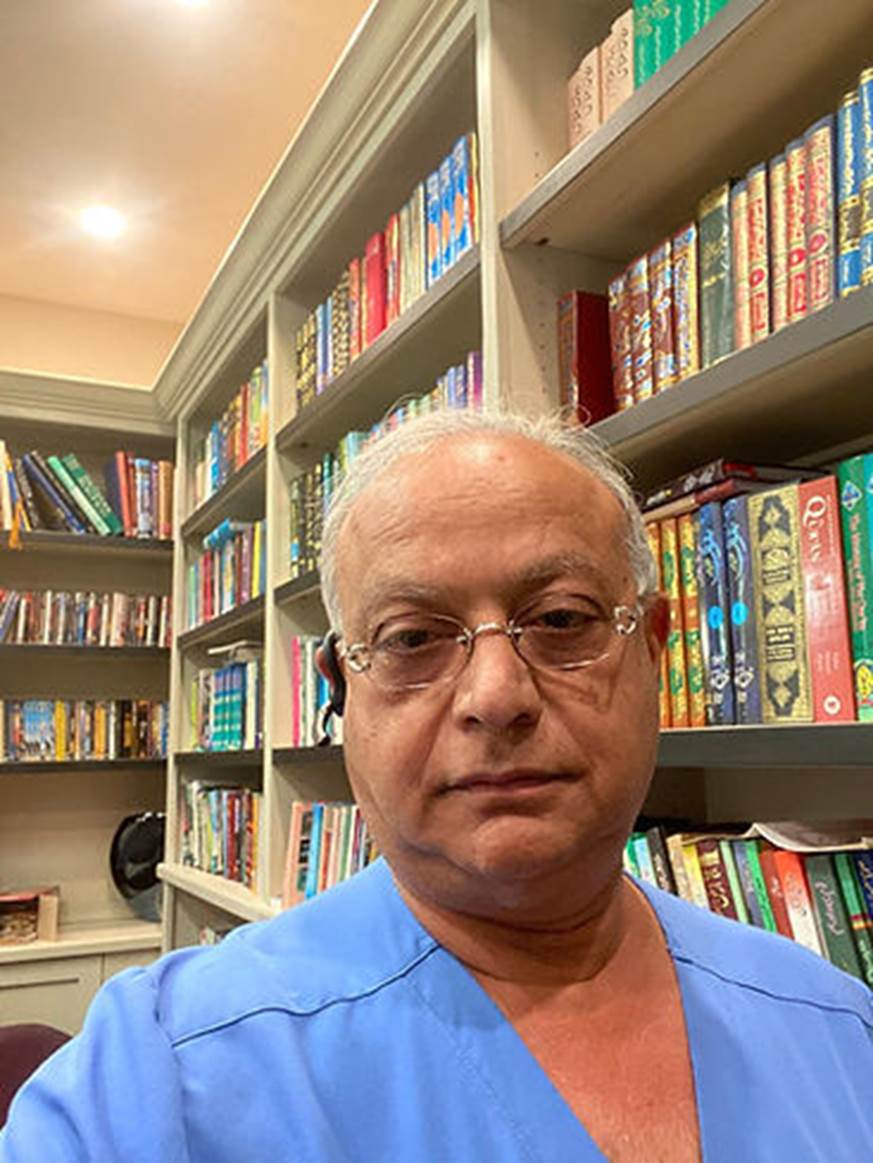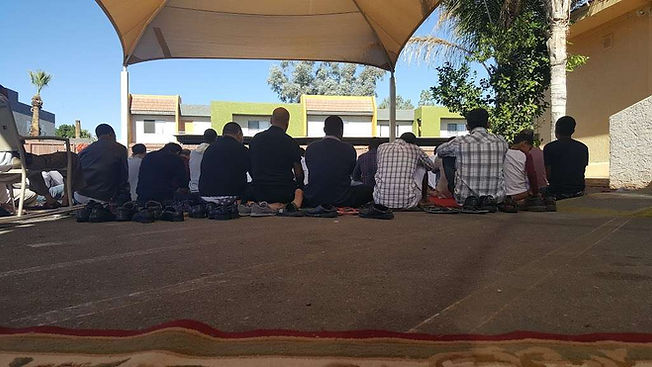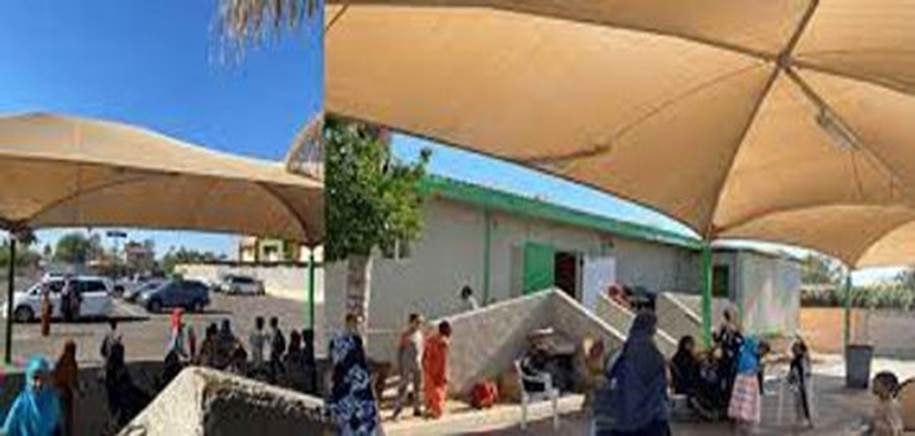
Dr Zubair Tahir
Dr Zubair Tahir: Building a Non-factional Mosque for a Divided Community
By Dr Aslam Abdullah
CA

The following conversation between family members explains the reasons why millions of Muslim Indians decided to reject Mr Muhammad Ali Jinnah's call to migrate to the new state created in the name of the nation theory in 1947.
"The first wife of my maternal grandfather left him because he wanted to stay in India, and she wanted to move to Pakistan. I asked my grandfather why he decided, knowing he'd never see his wife again.
Me - Nana, why didn't you leave India at the time of partition when some Muslims did?
Him - How could a person leave his own country? Where he has spent his childhood, made memories, where he has his house and his people.
Me - But your wife, you knew you'd never see her again if you stayed in India?
Him - I had decided not to leave India, whatever may happen. But she wanted to move to Pakistan, so she left, and I didn't even stop her.
Me - But there were riots everywhere, weren't you afraid?
Him - I was born here; I wish to die here only. So, there was nothing to be afraid of. It was better to die in my own country than move to some foreign land in the name of religion."
Syed Amjad Ali, a wealthy merchant of the princely state of Mustaphabad known as Rampur, was one of those Indian Muslims who had decided to migrate to Pakistan after witnessing large-scale rioting against his community in North India. He even visited Pakistan and bought a massive parcel of land in Lahore to settle his family. He returned to Rampur to take his family to their new country.
His wife refused. She pleaded her case to stay in India. She spent days praying in seclusion, asking God to convince her husband to change his decision. She finally prevailed, and Syed Amjad Ali changed his mind. He was a philanthropist and spent his resources to rehabilitate displaced Muslims and give the best education to his children. In his last years, he sponsored getting the Qur’an translated into Hindi for free distribution.
Her prayers not only made her husband change his decision, but Allah blessed her with a son, who later moved to the United States and became a pioneer in establishing a Muslim community from nowhere in the desert of Arizona. She did not attend a modern school but ensured her sons got the best education.
Dr Zubair Tahir had his early education in Rampur. He had an interest in surgery from his childhood. He pursued medical sciences in India's prestigious King George's Medical University, established in 1906 in Uttar Pradesh capital, Lucknow.
His father had promised a hospital in Rampur. Later, the priorities changed, and Dr Tahir migrated to the US in 1975 to further his medical career. After completing his residency, he moved to Arkansas and Arizona in 1991.

Muslim Community Mosque in the center of Phoenix
In 1995, Dr Zubair Tahir, a young general surgeon, decided to perform Hajj to express his gratitude to the Creator. He had some savings from his previous job. He spent all to purchase land to build a mosque for a community that was almost non-existent then.
In 1991, not many immigrants knew Phoenix, Arizona. Most immigrants knew New York and Chicago, where they landed and settled. The City of Phoenix had only one Masjid, ICC. Some members wanted to see changes but met resistance, so they rented a warehouse in 1994 and named it as the Muslim Community Mosque.
Soon after, they decided to buy the land for the second Masjid in town. They checked several sites but chose the ground at 32nd Street and McDowell. No Muslim population was around. They performed the first Friday prayers holding umbrellas because there was no building.
Soon, they bought a wooden box building and placed it over it. The political turmoil in Africa resulted in refugees from Somalia and Sudan; on September 11, 2001, refugees from Afghanistan, Iraq, and later from Burma were all inhabited around this area. Thousands of immigrant Muslims reside around this area and use this wooden box.
Most members of the Muslim Community Mosque are low-income refugees and don't have the financial resources to support the Mosque's expansion costs. The current facility holds approximately 350 worshipers; on Friday, it reaches its total capacity of over 450 attendees. Hence, over 100 worshipers must pray outside in hot or cold weather. The ladies pray in a crowded room of 80 square meters with a capacity of 100 only. The current facility is over 50 years old.

The community wants to reconstruct a facility that can address these challenges. This new Masjid will change the perception of the locality and will be a significant landmark for the City of Phoenix.
Today, the Mosque serves hundreds of families with two full-time Imams, Sunday school, and Hifz classes. It is one of those few mosques in the US that have over 200 people in its fajr (dawn) prayers. The Mosque is officially part of the North American Islamic Trust.
The story of the Mosque is fascinating. After its establishment, Muslims, mainly immigrants, started settling around it. Somalians, Sudanese, and Afghans live near the Mosque.
Dr Zubair also bought the adjacent land to establish residential quarters for the two Imams. Now, the two serve the community 24 hours a day. In addition to performing their duties as Imams, they serve as janitors, cleaners, and guards. Their salaries are not worth mentioning. It is the dedication that has kept them there for decades.
Every day, the people attending the Fajr prayers serve each other breakfast without burdening the Mosque's financial resources.
A decade ago, a wealthy man from a Gulf state visited the state to get his son treated. Dr Zubair helped him in more than one way. The man promised that he would help build the Mosque. He invited Dr Zubair to his country and proposed a few structural changes as conditions for supporting the project financially. Even though the Mosque had city-approved engineering designs, the management agreed to accommodate changes. One of the conditions was to have the Mosque affiliated with the NAIT. The board complied with all the conditions, but the financial help never came.
The decision to join the NAIT did not sit well with the supporters of the Tablighi Jamaat, who believed that they should be the primary custodians of the Mosque.
Dr Zubair believes that Mosques are the houses of Allah and trust with the community. Because of disputes and skirmishes, people from different community factions withheld their donations.
Dr Zubair and his team have started reconstructing the Mosque, and they need one million dollars to complete it to provide services to over 500 families living nearby.
Despite his busy schedule, seventy-three-year-old Dr Zubair has remained dedicated to the Mosque to ensure his religious commitment to people remains one hundred percent.
As a cardiologist and pilot who once owned several commercial planes, he could live a comfortable life. Yet, he embarked on a project to make his community viable in the new world. His is a story of a selfless person who offered his community a place to raise their generations in the traditions of their faith. He started memorizing the Qur’an a few years ago and has completed 26 juz. His whole purpose in the remaining years is to see the community rebuild the Mosque as quickly as possible as a gesture of gratitude to God.
(Dr Aslam Abdullah is a resident scholar at Islamicity.org and editor-in-chief of the Muslim Observer newspaper. He is also the Indian Islamic Heritage Project director of the American Federation of Muslims of Indian origin and the interim President of the World Council of Muslims for Interfaith Relations, WCMIR.)

